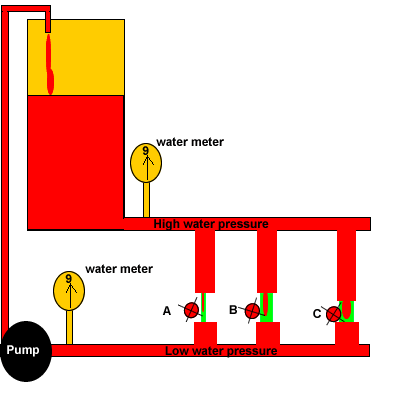An electric current flowing through a wire can be compared to water flowing through a pipe.
Like water, an electric current will flow through a wire when there is a potential difference. Water flows only when there is a difference in water pressure. Water will flow from an area of high water pressure to an area of low pressure. It will continue to flow until their is no difference in pressure. Electric current flows in a similar way to water. An electric current will flow through a wire when there is a difference in potential between the two ends of the wire. Electrical potential can be considered as a difference in electrical pressure.

Three devices are connected in a circuit. The resistance of each appliance is shown in green. The more narrow the green tube the greater the resistance. Little current flows through devices with high resistance.
A voltmeter measures the potential difference across a wire. Some kind of electric pump is needed to maintain a potential difference across a wire in order to generate a continues flow of electrons. Such electric pumps are commonly called batteries or generators.
When a voltmeter is connected to a circuit it is placed across the appliance. In the animation on the right it is placed across the light globe.
